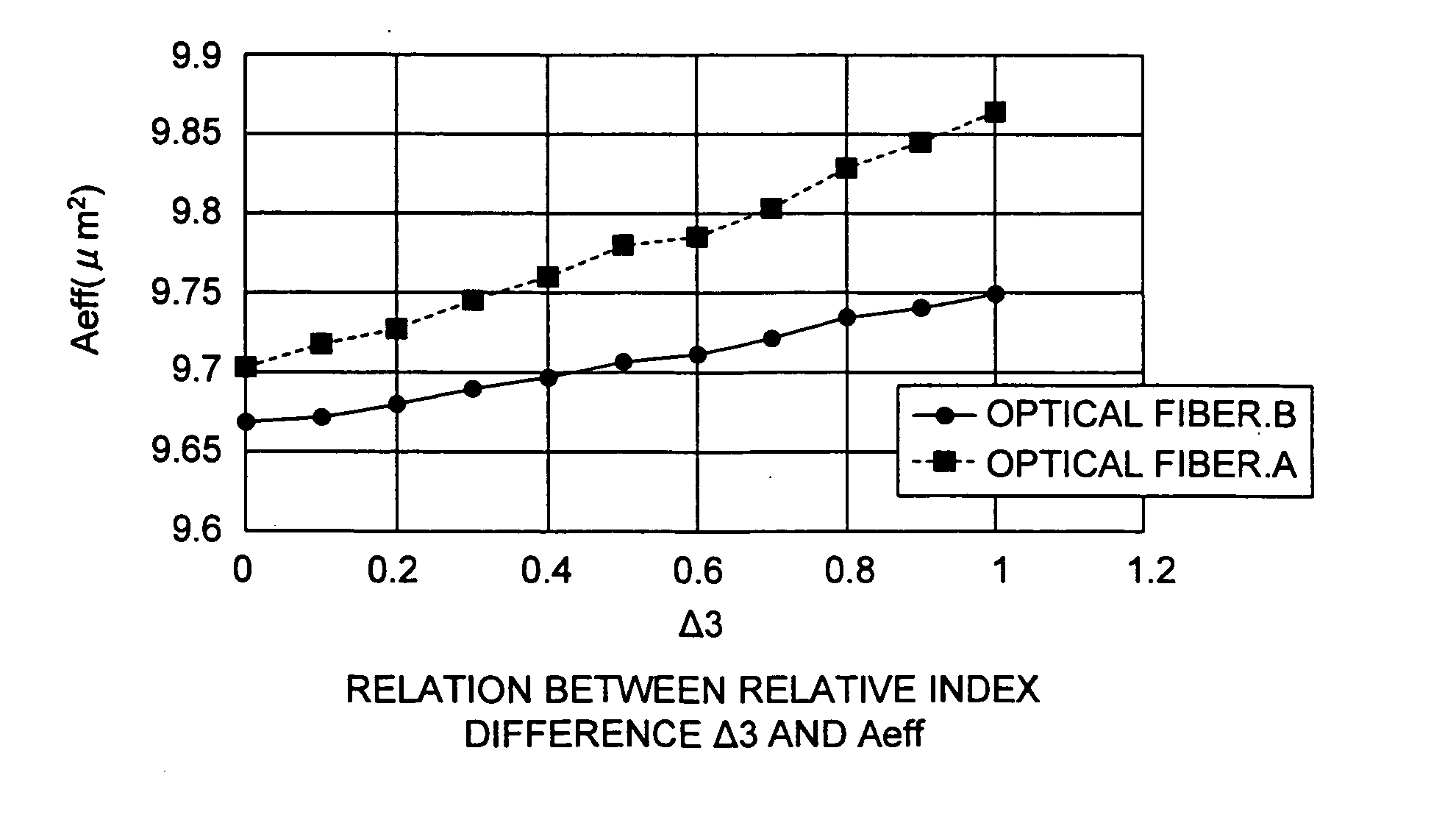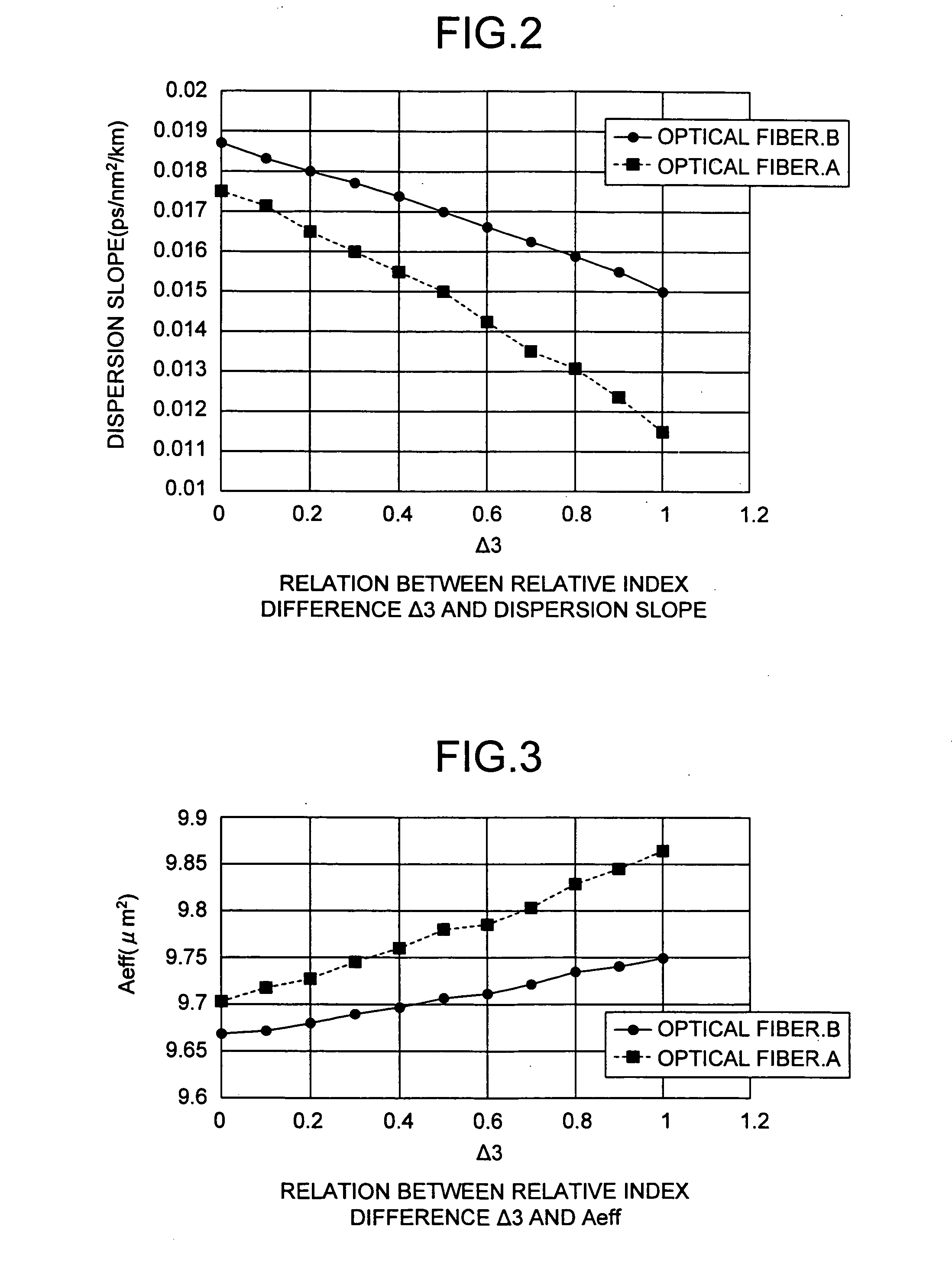Optical fiber having high nonlinearity
a technology of optical fiber and nonlinearity, applied in the field of optical fiber, can solve the problems of unsuitable high-speed signal processing, complex production equipment, and deterioration of production yield, so as to increase the nonlinearity of optical fiber, and reduce the value of effective area
- Summary
- Abstract
- Description
- Claims
- Application Information
AI Technical Summary
Benefits of technology
Problems solved by technology
Method used
Image
Examples
first embodiment
[0049] As described above, it is understood from equation (1) that if the nonlinearity of the optical fiber is to be increased, the nonlinear refractive index n2 is required to be increased or the effective area Aeff reduced. The value n2, which is determined by the material, however, cannot be easily increased. It is more realistic, therefore, to reduce the value of the effective area Aeff of the optical fiber as far as possible. the effective area Aeff of the optical fiber is determined as equal to or less than 15 μm2, or more preferably equal to or less than 12 μm2. As a result, an optical fiber having a larger nonlinear constant in which a nonlinear constant is equal to or more than 25×10−10 / W, or equal to or more than 40×10−10 / W is obtained at the wavelength of 1550 nm.
Relative Index Difference Δ1 and Δ2
[0050] The value Aeff can be most effectively reduced by increasing the relative reflective index difference Δ1. A simulation is carried out for calculation of the proper relat...
second embodiment
[0084] The optical fiber and the optical wavelength converter and the pulse compressor using the optical fiber are explained with reference to FIGS. 13 to 19.
[0085]FIGS. 13A, 13B show an example of the optical fiber according to the second embodiment. FIG. 13A shows the refractive index profile of the optical fiber, and FIG. 13B shows a part of the cross section thereof. The outer line of the cladding 54 is not shown.
[0086] As shown in FIG. 13A, this optical fiber having what is called the W-type refractive index profile includes a first core 51 located at the central portion and having the a refractive index profile shown in equation (8), a second core 52 arranged on the outside of the first core 51 and having a lower refractive index than the first core 51, and a cladding 54 arranged on the outside of the second core 52 and having a higher refractive index than the second core 52. Also, the refractive index of the cladding 54 is higher than that of the pure silica glass indicate...
PUM
 Login to View More
Login to View More Abstract
Description
Claims
Application Information
 Login to View More
Login to View More - R&D
- Intellectual Property
- Life Sciences
- Materials
- Tech Scout
- Unparalleled Data Quality
- Higher Quality Content
- 60% Fewer Hallucinations
Browse by: Latest US Patents, China's latest patents, Technical Efficacy Thesaurus, Application Domain, Technology Topic, Popular Technical Reports.
© 2025 PatSnap. All rights reserved.Legal|Privacy policy|Modern Slavery Act Transparency Statement|Sitemap|About US| Contact US: help@patsnap.com



